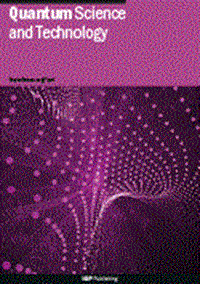Unraveling quantum phase estimation: exploring the impact of multi-photon interference on the quantum Fisher information
IF 5
2区 物理与天体物理
Q1 PHYSICS, MULTIDISCIPLINARY
引用次数: 0
Abstract
Quantum interference is known to become extinct with distinguishing information, as illustrated by the ubiquitous double-slit experiment or the two-photon Hong–Ou–Mandel effect. In the former case single particle interference is destroyed with which-path information while in the latter bunching interference tails-off as photons become distinguishable. It has been observed that when more than two particles are involved, these interference patterns are in general a non-monotonic function of the distinguishability. Here we perform a comprehensive characterization, both theoretically and experimentally, of four-photon interference by analyzing the corresponding correlation functions, contemplating several degrees of distinguishability across different parameters. This study provides all the necessary tools to quantify the impact of multi-photon interference on precision measurements of parameters such as phase, frequency, and time difference. We apply these insights to quantify the precision in the estimation of an interferometric phase in a two-port interferometer using a four-photon state. Our results reveal that, for certain phase values, partially distinguishable multi-photon states can achieve higher Fisher information values compared to the two-photon experiment. These findings highlight the potential of distinguishable multi-photon states for enhanced precision in quantum metrology and related applications.解开量子相位估计:探讨多光子干涉对量子费雪信息的影响
众所周知,量子干涉在有区别信息的情况下会消失,如无处不在的双缝实验或双光子Hong-Ou-Mandel效应所说明的那样。在前一种情况下,单粒子干涉与路径信息被破坏,而在后一种情况下,随着光子变得可区分,聚束干涉逐渐消失。已经观察到,当涉及两个以上的粒子时,这些干涉图案一般是可分辨性的非单调函数。在这里,我们通过分析相应的相关函数,在理论和实验上对四光子干涉进行了全面的表征,考虑了不同参数之间的几个程度的可区分性。本研究提供了所有必要的工具来量化多光子干涉对相位、频率和时差等参数的精确测量的影响。我们运用这些见解来量化使用四光子态的双端口干涉仪干涉相位估计的精度。结果表明,在一定的相位值下,部分可分辨的多光子态可以获得比双光子实验更高的Fisher信息值。这些发现突出了可区分的多光子态在量子计量和相关应用中提高精度的潜力。
本文章由计算机程序翻译,如有差异,请以英文原文为准。
求助全文
约1分钟内获得全文
求助全文
来源期刊

Quantum Science and Technology
Materials Science-Materials Science (miscellaneous)
CiteScore
11.20
自引率
3.00%
发文量
133
期刊介绍:
Driven by advances in technology and experimental capability, the last decade has seen the emergence of quantum technology: a new praxis for controlling the quantum world. It is now possible to engineer complex, multi-component systems that merge the once distinct fields of quantum optics and condensed matter physics.
Quantum Science and Technology is a new multidisciplinary, electronic-only journal, devoted to publishing research of the highest quality and impact covering theoretical and experimental advances in the fundamental science and application of all quantum-enabled technologies.
 求助内容:
求助内容: 应助结果提醒方式:
应助结果提醒方式:


